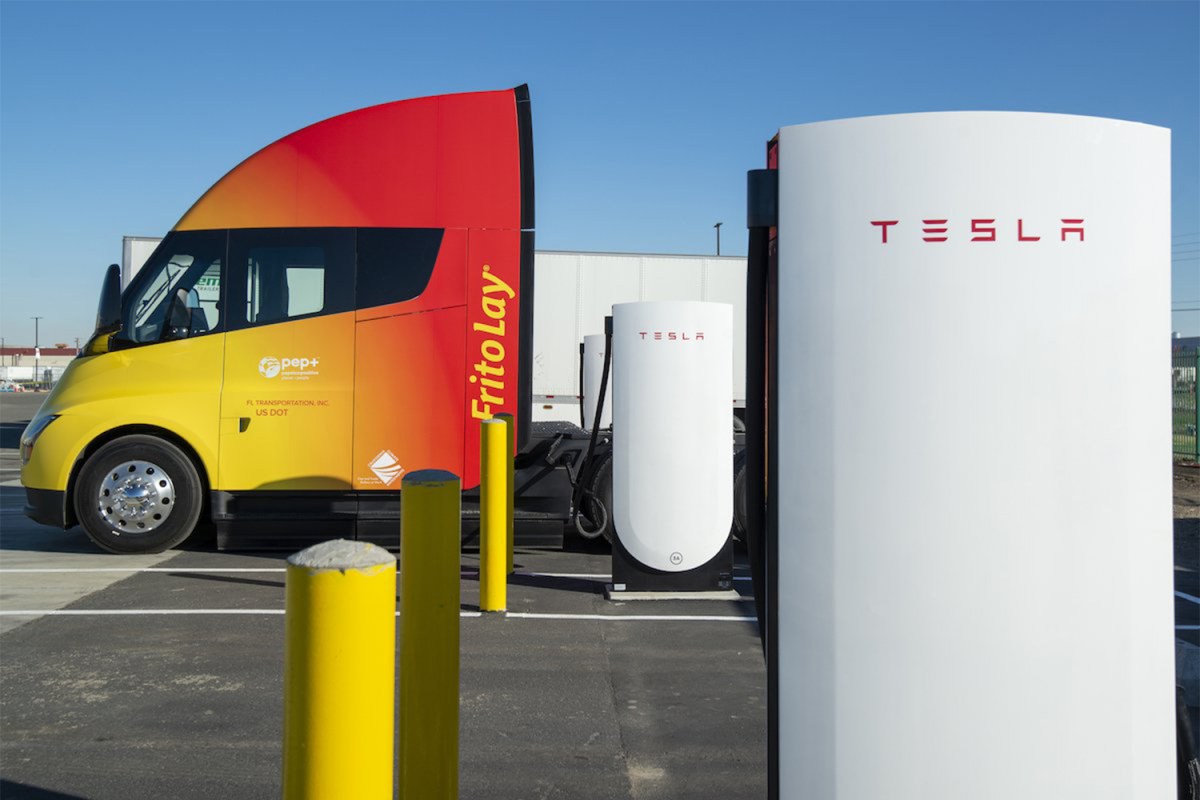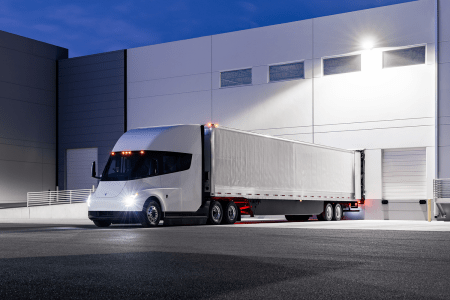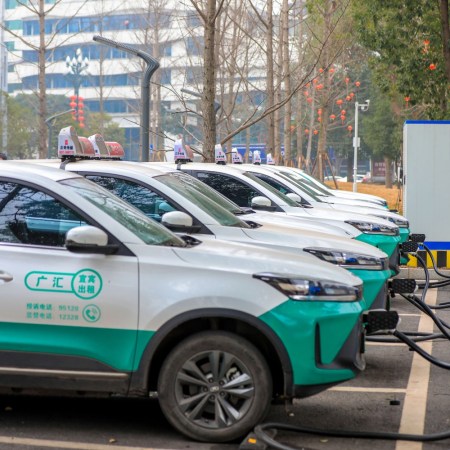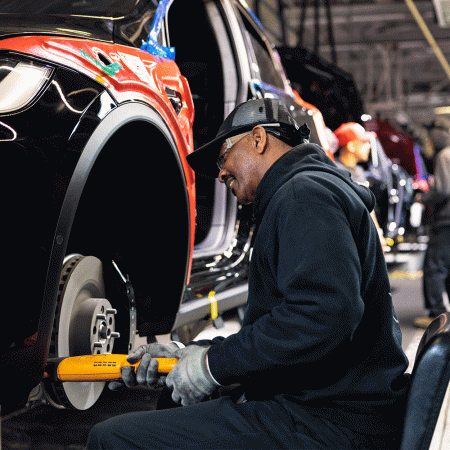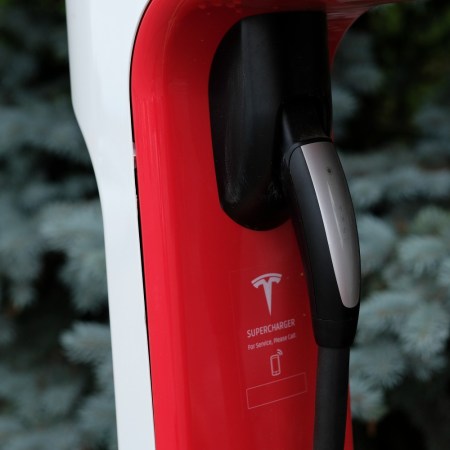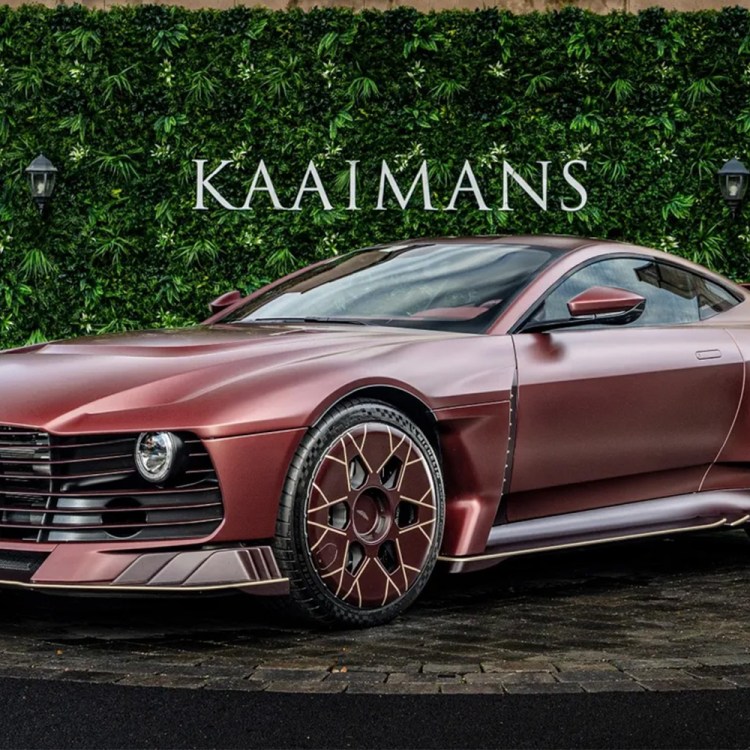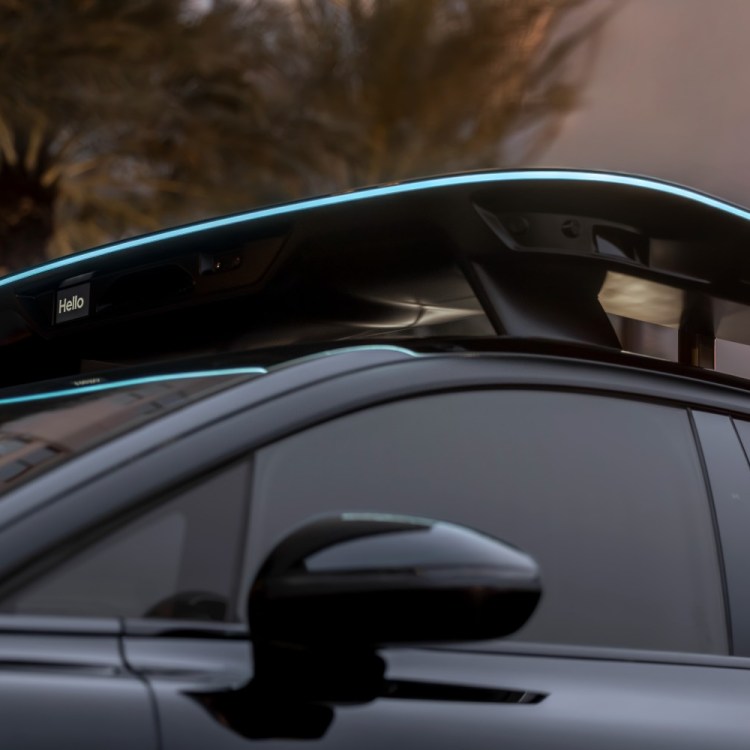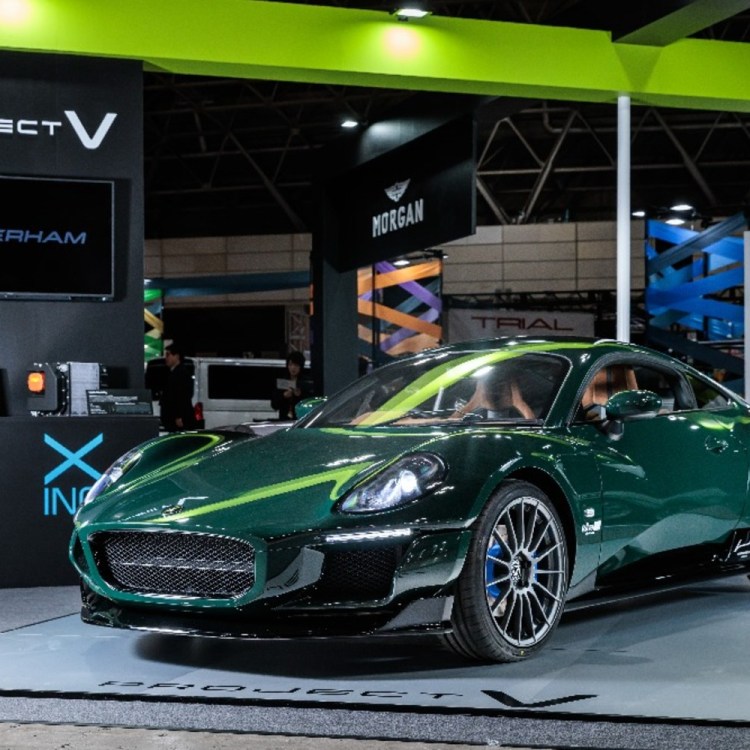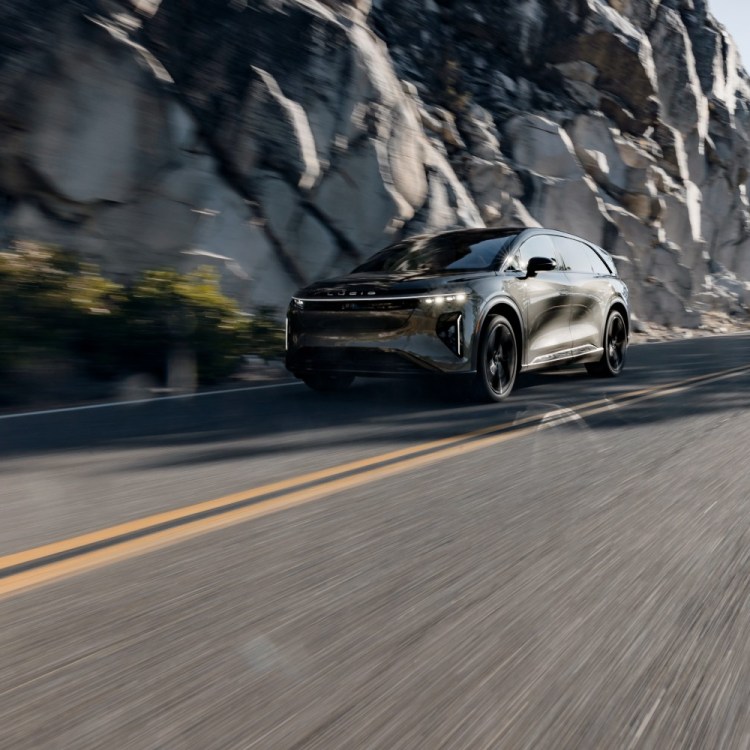In December, Tesla delivered its first Semi models to PepsiCo. This was five years after the electric semi truck was first unveiled by Elon Musk, and almost four years after production was originally promised to begin. But all those gripes were quickly forgotten now that the long-haulers were actually out in the real world. The only problem? While we could all see the cargo-carrying EVs, we didn’t actually know much about them: how many were being produced, how they performed in the field and what real truckers actually thought about them.
Two months later, some of those details are starting to come out. In a 16-minute report released on YouTube on Monday, CNBC got a look at the Tesla Semis currently in operation at Frito-Lay’s factory in Modesto, California, and interviewed a few higher-ups at PepsiCo, as well as trucking industry experts. Additionally, MotorTrend recently got a look not just at these Semi models, but at the plant at large, which is a pilot project for showcasing how the company can decarbonize its operations. To date, the Modesto factory has achieved a 91% reduction in greenhouse gas emissions “from direct fleet operations,” according to Frito-Lay.
One big question that’s yet to be answered is how the truck drivers themselves are responding to driving these electrified vehicles. CNBC said that they weren’t allowed to interview them, while MotorTrend was able to extract a few meager details (one driver told the magazine the Semi “drove like a car” and is comfortable, and they also said their routes are much shorter than the 500 mile maximum range touted by Tesla).
The Bill Gates Argument Against the Tesla Semi Still Stands…For Now
Tesla delivered its first long-haul trucks. Now the real test begins.From their reporting, though, there are five clear problems facing the Semi now that it’s actually delivering bags of Cheetos and cases of Pepsi Zero Sugar.
- Can Tesla meet its production goals? Right now, Mike O’Connell, VP of supply chain at PepsiCo, says they’re launching 15 Tesla Semis at the Modesto factory and 21 at their facility in Sacramento, with a total of 100 planned to be in use by the end of 2023. But it remains unclear the rate at which Tesla is currently able to produce these heavy-duty trucks. The company recently announced plans to expand its Nevada Gigafactory to mass-produce the Semi, which is a vote of confidence for the future, but not immediately helpful for ramping up production in the present.
- What are the specs? The short answer: we don’t know. While Tesla is touting certain performance metrics like a 500-mile range at a full 82,000-pound gross combined vehicle weight rating, and charging rates of near-empty to 70% range in 30 minutes, there are important aspects that remain a mystery. Most importantly: how much does the Semi weigh without cargo? This is crucial information to understand because…
- …weight of batteries potentially means less cargo. This is part of the Bill Gates argument against electrifying long-haul, heavy-duty trucks. We just don’t know how big of an issue this is at the moment, though it’s likely the Semi weighs significantly more than its diesel counterparts. But O’Connell told CNBC that “we believe there is a positive economic business case for electrifying the fleet.”
- The Modesto factory has more reliable alternatives. Among Frito-Lay’s fleet of vehicles that are purportedly more sustainable than typical diesel trucks are “three electric BYD 8Y yard tractors, six Peterbilt 220EV electric box trucks for local last-mile deliveries [and] 38 natural-gas powered Volvo VNL trucks for long-distance slogs.” Those natural gas alternatives, while not as environmentally friendly as the Semi, can drive comparable distances with comparable loads as diesel trucks, while the Tesla model cannot.
- They’re playing it safe on range. When Tesla had its Semi delivery event in December, they released a video supposedly showing one of their electric trucks driving 500 miles on one charge fully loaded. But Frito-Lay so far isn’t pushing that to its limit, instead only driving them on routes up to 425 miles (and some routes much shorter) before they come back to the Modesto plant to charge at Tesla’s higher-powered, 750-kW charging stations. After all, while Tesla’s consumer cars can charge at a regular wall outlet if worse comes to worst, that’s not a possibility for these behemoths, which MotorTrend describes as featuring batteries that are the equivalent of 10 Models S Plaid packs.
Don’t expect answers and solutions to these issues anytime soon. Do expect lots of speculation from people on social media, though, as evidenced by the heated debate taking place around the supposed breakdowns of a few Semi models while in operation at PepsiCo.
Thanks for reading InsideHook. Sign up for our daily newsletter and be in the know.
